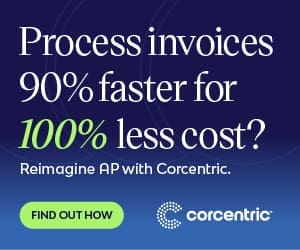A Quantified Look At Cash APplication System Software

Cash Application System Software
The entire order to cash process has significant impact on each business financial operations, and the choice of cash application system software can maximize cash flow, reduce dispute resolution time and help enhance operational efficiency. Emerging cash application systems are tailored to meet the unique requirements of the finance team, but thorough evaluation of the options is essential for positive return on the investment.
The ability to quickly and accurately apply customer payments is critical capability for the finance department. Without proper means of automatically registering and connecting invoices, payments and customer accounts, it can be difficult?if not impossible?to capitalize on the opportunity of an efficient order to cash cycle. When evaluating the cash application system software, executives should analyze their existing systems, processes, data protocols and staff capabilities to ensure the proper solution is selected for the organizations order to cash process.
Step 1: Document Existing Processes
Executives should first review the current processes associated with incoming payments, such as the method of payment, the stages of approval, the staff responsible for applying payments, if the implementation requires manual entry and if discounts are applied. Companies may also take into consideration how they currently track payments, if they can currently access customers? payment histories and how they communicate payment information to customers.
Step 2: Identify System Requirements
In order to identify the system requirements of the most suitable cash application system software, executives need to consider their own companies preferences, long-term goals and budget. If the budget allows, cash application system offering machine learning capabilities may be more beneficial. Additionally, executives must consider the functionality needed for the current and future financial processes, such as cash balance reporting, multi-currency capability, real-time analytics and any integration into existing systems.
Step 3: Analyze Data Sources
The executives must also consider the various sources of data and how efficiently the cash application system can collect, reconcile and store that information. Such sources may include the system of record, the ERP, any invoicing platforms, bank account reconciliations and any existing payment tracking tools. Additionally, it is important to determine the type of data integration required to ensure the collected data is complete and accurate.
Step 4: Analyze Financials
This process of analyzing the financials assesses the accuracy and speed at which the cash application system is able to apply payments and identify any discrepancies between the payments received by the company and the customers? expected liabilities. The executives should consider the need for system that can detect and reduce payment errors and reduce the number of discrepancies that cannot be sorted quickly and efficiently.
Step 5: Review Customization Options
The executives should assess the customization options of the cash application system, especially during and after implementation. They should review options such as third-party support, options for embedding existing software products and the level of support offered by the vendor, as well as nearby data centers for protection and access in case of data loss. Customization also includes the ability of the application to fit the organizations system of record and match the companies priorities, processes, data retention policies and standard operating procedures.
Step 6: Assess Payment Options
Executives may consider the benefits of integrated payment options, such as the option to accept credit card payments, or integrate with existing payment gateways. Companies may also select cash application system software that offers options such as automatic payment reminders, customized payment terms, online payment tracking and the ability to take secure payments from customers.
Step 7: Evaluate Automation Capabilities
Finally, automation is major factor of cash application system software, so executives should compare automation options such as automatic application of payments, bulk invoice processing and notification for any overdue payments. Companies may also review the automation options for identifying payment discrepancies and updating customer payment histories and selecting system that is able to predict future payments.
Conclusion
Choosing the correct cash application system software is essential to the success of any organizations order to cash cycle. By thoroughly evaluating the system requirements, the data sources, the financials, the customization options, the payment options, and the automation capabilities that are needed, executives can be confident they are selecting the most suitable cash application system software for their organization.

